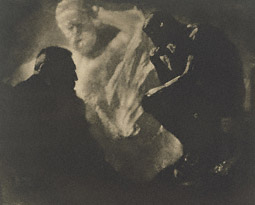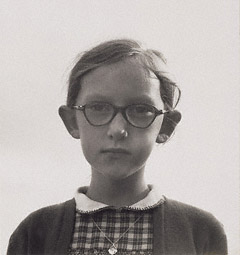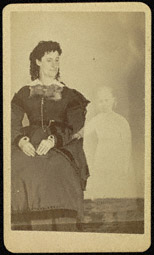|
Following the announcement of the invention of photography in 1839, portraiture became accessible to all. The 1850s marked the beginning of the medium's commercialization. Continuing technical improvements enabled the instant capture of likenesses under virtually any condition and expanded the dialogue between the photographer and the sitter.
While photography was first presented as the most truthful of representations, its underlying subjectivity is especially relevant in portraiture. Drawn exclusively from the J. Paul Getty Museum's collection, this selection of portraits surveys the relationship between photographer and subject, including formal portraits, intimate pictures, and documentary photographs.
|
 |
|
In 1954, Dorothea Lange undertook an assignment for a photographic essay for Life magazine and spent two months in the Irish countryside documenting the bleak life of the inhabitants of what the magazine dubbed the "land of the devout." Facing her subject head on, Lange centered her Rolleiflex camera on the schoolgirl under natural lighting conditions. The neutral background enhances the sustained intimacy of the portrait. The girl's intense gaze seems to confront both the photographer and the viewer.
|
 |
|
William H. Mumler claimed to be able to photograph the spirits of departed loved ones. Although his methods were never disclosed, he made ghostly images by incorporating an existing picture of the deceased into a new photograph he made of the surviving relative.
This image is printed as a carte-de-visite, the most popular type of photographic portrait until the 1880s. With this process, as many as eight different small-format images could be produced on the same glass-plate negative. They were then printed, cut apart, and affixed to card stock. Cartes-de-visite were often exchanged among family and friends. Their mass production and modest cost made the portrait available to a large number of people, and the photographic portrait business boomed as a result.
|
 |
 |

 |
 |
Rodin—The Thinker, Edward Steichen, 1902
© permission Joanna T. Steichen
|
 |
Edward Steichen visited and observed Auguste Rodin in his studio for an entire year before he made this portrait. The sculptor stands before two of his masterpieces: a statue of French author Victor Hugo and The Thinker.
Steichen did not have enough room to capture the whole scene on one plate. He made two negatives—one of the artist with the Hugo sculpture and one of The Thinker—then combined them into one print. As Steichen noted: "It is probably more of a picture to Rodin than it is of Rodin, because after all, it associates the genius of the man with that expressed by his work."
|
 |
|
A pioneer of color photography, Eggleston has been exploring and confronting the banalities of American culture since the 1960s. Many of his pictures are taken in familiar environments, especially in Mississippi, where he was born and raised.
Assuming neutrality, his photographs of the ordinary enable him to produce images that differ from our expectations. This portrait of three children standing on the road at nightfall in Halloween costumes combines exaggerated perspective with the controlled, saturated coloration of the dye-transfer process.
|
 |



